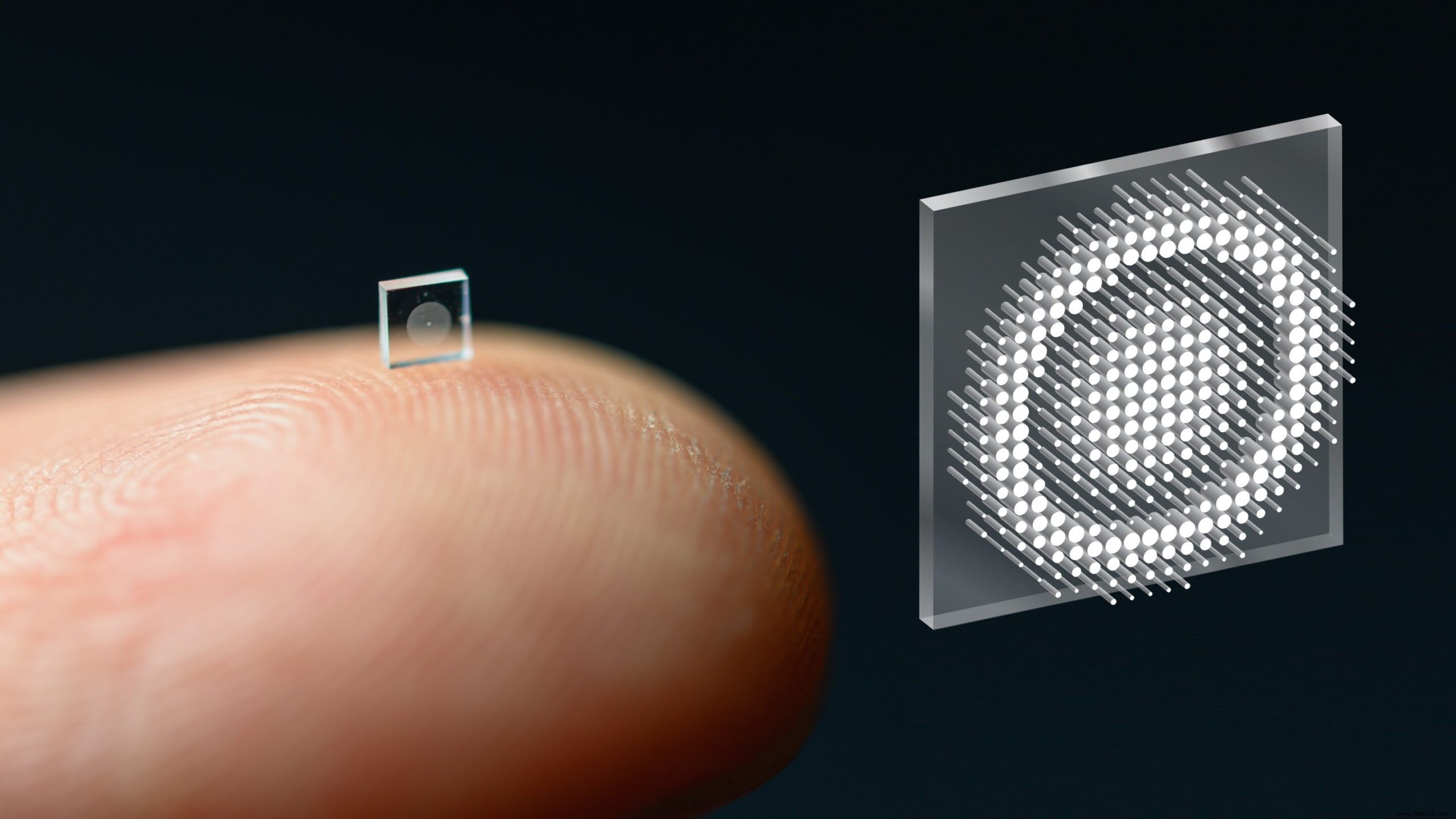Researchers announce they have developed a camera the size of a large grain of salt. Unlike other similar systems already deployed which offer blurred and distorted images with limited fields of vision, this one will allow clear and color vision, thus favoring the detection of possible problems in the human body.
Cameras are ubiquitous in many fields of application, such as medical imaging, smartphones, security, robotics and autonomous driving. Smaller imagers may also enable many new applications in nanorobotics or in vivo imaging.
There are also sensors with submicron pixels. Nevertheless, in this area, conventional optics imposes some limitations. The objectives must indeed remain sufficiently "imposing" to allow the optical impression for example. Another fundamental barrier is the difficulty of reducing the focal length, as this induces greater chromatic aberrations.
To circumvent these obstacles, researchers are increasingly turning to computer-designed metasurface optics.
A traditional camera uses a series of curved glass or plastic lenses to focus light rays. This new optical system is actually based on a structure barely half a millimeter wide that can be produced much like a computer chip. This metasurface is dotted with 1.6 million mini-cylinders, each about the size of the human immunodeficiency virus (HIV).
Each of these small structures offers a unique geometry and functions as an optical antenna. Using algorithms based on machine learning, the information collected is combined to produce images.
More recently, researchers at Princeton University and the University of Washington have built on this approach to develop an ultra-compact camera the size of a big grain of salt. In the journal Nature, the team points out this new system could produce sharp, full-color images similar to those offered by a conventional camera lens 500,000 times larger in volume.
A key innovation in creating this system was the integrated design of the optical surface with the algorithms enabling computer processing. This improved the camera's performance in natural light conditions, unlike previous metasurface cameras which required pure laser light from a lab or other ideal conditions to produce high quality images.

Eventually, these small cameras could allow endoscopies almost non-invasive to diagnose various health problems. Arrays of thousands of these cameras could also be used for larger, more complete scene detection, allowing us to probe inside the human body in unprecedented detail.
In addition, these metasurfaces are based on silicon nitride. It is a glass-like material compatible with standard semiconductor manufacturing methods used for computer chips. In other words, these small cameras could be easilymass-produced and inexpensively .